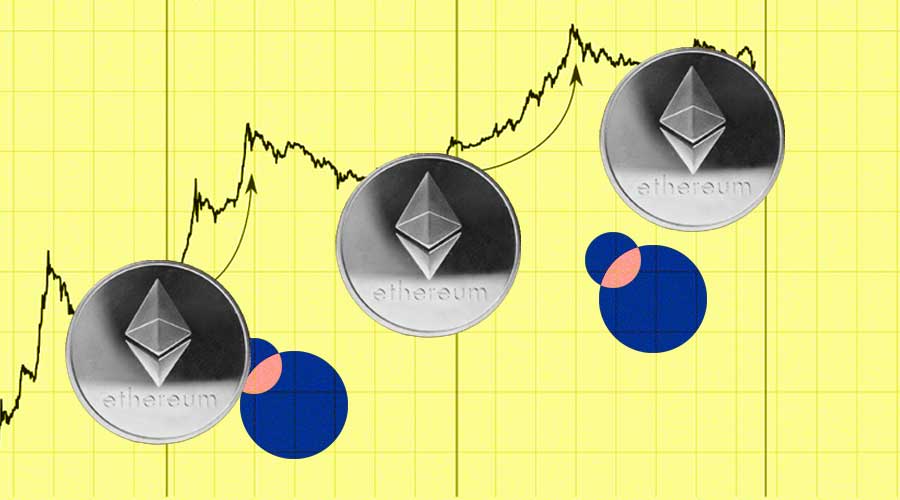Seismic shifts are happening in the crypto sphere, as Ethereum is completing its transition to Ethereum 2.0. One of the biggest events in this process is Triple Halving.
But what exactly happens during Triple Halving? How will it affect the Ethereum ecosystem in the long run? And what will it mean for investors? Here’s the run-down.
What is Ethereum 2.0?
Before deep-diving into the details of Triple Halving, it’s necessary to take a step back and understand Ethereum 2.0.
Ethereum is one of the biggest cryptocurrencies out there, but it has been facing several major hurdles and scaling ceilings.
Launched in 2015, Ethereum currently uses Proof of Work (PoW) as a consensus mechanism for transactions. This makes it energy-intensive and hard to scale, limiting it to 30 transactions per second (TPS).
This imposes long wait times, high fees, and a disadvantage against competition such as Solana, which can handle 65,000 TPS.
The solution to this challenge is Ethereum’s transition to Proof of Stake (PoS) as a consensus mechanism. This is far less energy- and time-consuming.
This transition already began in 2020, when Ethereum set up a parallel network running on the PoS Beacon chain.
In September 2022, a process called The Merge is set to happen, where these two parallel networks merge. Once this is completed, Sharding will be implemented. This boosts scalability by distributing data across multiple machines on the PoS network.
The tentative date is September 15th.
And then there is Triple Halving.
What is the Ethereum Triple Halving?
Ethereum Triple Halving is a post-Merge process. There are three elements to Triple Halving: burning, reduced issuance, and staked ETH.
First, Ethereum burning has been an integral part of ETH since the EIP-1559 upgrade in August 2021, also called The London Hard Fork.
Burning creates a deflationary pressure on the network, increasing the scarcity of ETH.
Second, Ethereum issuance will decrease overall. According to former blockchain engineer Montana Wong, the net ETH issuance per year will drop from 4.3% to 0.4%. This equals approximately 1500 ETH daily.
Third, there is staking.
As a result of Ethereum staking mechanics, stakers won’t be able to make a withdrawal of their staked coins until at least half a year after The Merge. At that point, a queue will allow them to gradually withdraw their coins. This measure also contributes to the temporary reduction of circulating ETH supply.
Overall, Triple Halving is similar to Bitcoin’s Halving, which occurs every four years. Because the planned process has a three-part approach and is thus equivalent to three Bitcoin Halvings, it is called Triple Halving.
The Effects of Ethereum 2.0 and Triple Halving on the Ethereum Ecosystem
Globally, the transition to Ethereum 2.0 will vastly improve the scalability of Ethereum.
The transition to a PoS model and the cutting out of miners will boost the network’s energy efficiency by more than 99%. This will give ETH a decidedly more environmentally friendly tint.
Furthermore, it is likely that demand for ETH will increase drastically in the coming days. Both the cutting of the network’s energy consumption and the deflationary pressure resulting from Triple Halving will probably drive up prices dramatically.
In terms of industry-wide performance, Ethereum 2.0 will highlight the cryptocurrency’s role as a leader in Web3 and DeFi, crowding out rivals.
Price Speculation Following Triple Halving
One of the most intensively discussed topics in industry circles is just how far The Merge and Triple Halving will drive up the price of ETH.
The ETH deposit contract will hold 13.29 Ether, with a total worth of over $25 billion.
The author of the Triple Halving approach, Nikhil Shamapant, holds that Ethereum is likely to go viral, more so than Bitcoin holding, due to ETH’s bullish potential and energy efficiency.
The official Triple Halving narrative ultimately sets a price target for ETH at a peak $150,000. This implies a $16 trillion market cap. Such a cap will likely only remain sustainable in the short term.
TechDev, one expert analyst, predicts that the next price bounds from inside Ethereum channels could hit its upper limit at $5,000.
Another leading crypto analyst, Decentrader, set a short-term target of $2,400, arguing that the liquidator and SFP indicators are showing a high volume of stops above the current price.
Conclusion
Ethereum’s transition to 2.0 in general and Triple Halving in particular are set to firmly cement this cryptocurrency as an energy-efficient, bullish asset for private and institutional investors.
Given a successful implementation of The Merge and Sharding, deflationary pressure from Triple Halving will likely drive up the price of ETH, though exactly to which level remains to be seen.


